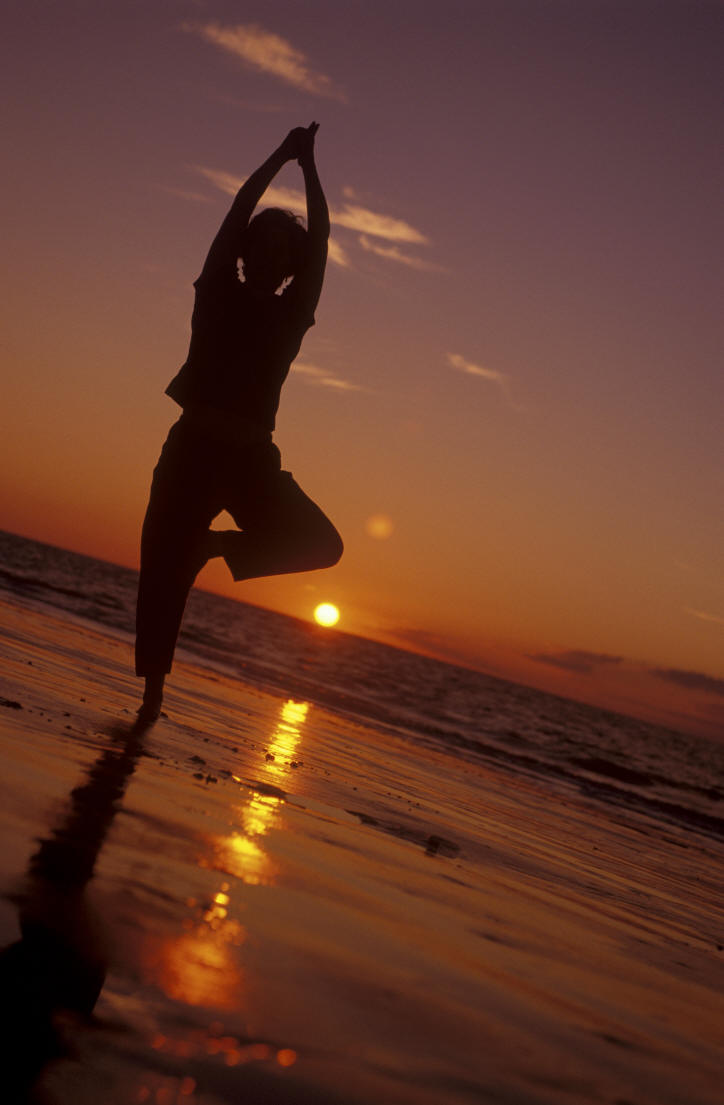Tag Archives: walking
British Military Fitness launches the walkfit workout
British Military Fitness, the UK’s largest outdoor fitness provider, has launched a new walkfit workout in eight London parks.
![WalkFit Logo [640x480].jpg](https://www.elixirnews.com/images/entries/WalkFit%20Logo%20%5B640x480%5D.jpg)
Walkfit with British Military Fitness (BMF) is a new, fun way to get healthy outdoors in your local park. Led by BMF’s highly trained fitness instructors the class will keep you interested with constant variety, achievable challenges and personal encouragement.
Retired Major Robin Cope, Managing Director at BMFsaid: “Many people I’ve spoken to, like to go for a walk but wouldn’t necessarily do it by themselves. Our classes will ensure that the members are with like-minded people and will be encouraged to chat and socialise while they exercise.”
![WF Image1 [640x480].JPG](https://www.elixirnews.com/images/entries/WF%20Image1%20%5B640x480%5D.JPG)
“We recognised the need for an outdoor exercise class that appealed to a broader audience, focusing on our common goal of getting more people active. We’ve made the classes for everyone, so even if you’re returning to exercise after children, injury or illness, the low intensity class is perfect for you. It’s a totally different experience to a gym or other fitness classes and I can guarantee that you won’t be asked to drop and give me twenty!” says Robin.
![WF Image 2 [640x480].JPG](https://www.elixirnews.com/images/entries/WF%20Image%202%20%5B640x480%5D.JPG)
Walkfit classes are fun, friendly, effective and great for meeting people in your local area. The launch will see classes starting in Battersea, Wandsworth, Dulwich, Peckham, Bushy Park, Hyde Park, Finsbury, and Cheam. To find your nearest Walkfit class or to try a FREE introductory class, visit www.walkfit.co.uk
More about Walkfit
- www.walkfit.co.uk
- Walkfit is a new, fun way to get healthy outdoors in your local park, led by highly trained fitness instructors.
- Classes are designed for all abilities and are taken by highly trained professional instructors who will carefully guide you through the activities and exercises. The class is low impact and low intensity exercise.
- Walkfit payment options: one class a week is £30 per month, unlimited classes per week is £40 per month and session blocks of 3 and 5 classes are £8.50 each. There is also an over 60/under 21 rate and partner rate of membership. More information on prices can be found at www.walkfit.co.uk
- Walkfit classes will run in the following locations: Battersea, Wandsworth, Dulwich, Peckham, Bushy Park, Hyde Park, Finsbury and Cheam.
- British Military Fitness (BMF), founded in 1999 by Major Robin Cope as an alternative form of fitness training to gyms. Like Walkfit, BMF classes last one hour and are taken by serving or ex-armed forces physical training instructors. The basic principles are the same as Walkfit – motivational instructors, a sense of fun, strong group dynamic and use of the great outdoors.
- BMF has over 17,000 members training in over 100 parks across the UK. For more information visit www.britmilfit.com
Millions put foot health at risk
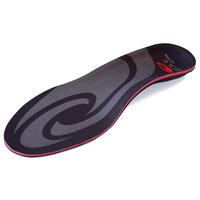
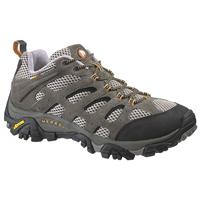
London: Walking is Britains most popular activity with approximately 38 million people walking for pleasure at least once a month.
But as the summer weather allows more of us to take up this activity, the number of injuries also increases. They range from Achilles Tendonitis (inflammation of the Achilles tendon), Tibial Stress Syndrome (Shin Splints) and Plantar Fasciitis (Inflammation of the bottom of the foot), to corns and blisters.
There is no doubt that walking is good for you, it has many health benefits, increases your levels of fitness and as a result the number of people walking for a hobby is on the increase and so is the number of injured feet!
Luke Barlow, founder of Fitness Footwear the number one online sports and activity shoe retailer said: Walking may appear to be the lightest of outdoor hobbies however, with 23.6 Million people regularly talking walks of 3.2 km or more it is important that the correct footwear is worn. With the summer approaching, many individuals and families will be dusting off their (potentially foot unfriendly) walking boots in anticipation of hitting the hills.
Fitness Footwear has partnered with the British Chiropody and Podiatry Association to provide walkers with the information needed to avoid unnecessary injury to feet in a variety of walking conditions.
With different days come different walking conditions, each requiring a diverse footwear type and alternative sock/shoe/insole combinations. Utilising the knowledge of the British Chiropody and Podiatry Association and its own shoe knowledge, Fitness Footwear has created the ideal combination to avoid unnecessary and painful injuries for five common walking conditions.
Hot Conditions The British Chiropody and Podiatry Association suggests: As with all types of clothing, it is important whilst walking in hot conditions to be well ventilated. A good quality sandal or sandal-type shoe is recommended to avoid any potential damage.
· Fitness Footwear recommends the Merrell Moab Ventilator shoes with a Smartwool Hiking Crew sock for its added protection. Finally it is recommended that a Sole Ultra SofTec Insole is used as inevitably the hot conditions will cause a hard ground – this particular insole is renowned for the support it provides to the knees and lower back.
Cold Conditions – The British Chiropody and Podiatry Association suggests: In cold conditions it is suggested that a thick woollen sock, or a couple of pairs of thinner socks, is best to provide greater comfort, warmth and protection from associated injuries.
· Fitness Footwear recommends the Merrell Chameleon Thermo 6 Waterproof Synthetic Shoe for its Thinsulate insulating lining ensuring that feet are kept warm, matched with a Brasher 3 Season sock a good all round protector and insulator. For the sole it is recommended that a Superfeet WinterGreen Performance insole is used as it provides insulation but also aligns the feet.
Wet Conditions – The British Chiropody and Podiatry Association suggests: Unless walking in streams or fords for extended periods, avoid the obvious choice of Wellington boots on long walks. Not renowned for their comfort, Wellingtons are prone to chaffing and the rubber soles tend to draw the feet. A good quality insole is necessary as that ventilates well.
·For walking in wet conditions Fitness First recommends the Salomon Mega Trek 6 Light GTX/WP boot as it is waterproof and breathable, with SealSkinz long light socks for their waterproof, windproof yet breathable capabilities. For the insole, a Superfeet Green performance insole is recommended as it is one of the best off the shelf orthotics on the market, and helps to align the body whilst walking.
Mountain terrain – The British Chiropody and Podiatry Association suggests: Essential for mountain walking is a thick trainer-type shoe or boot with plenty of grip. Cushioned insoles are recommended to avoid potential lesions or damage on rocks and uneven surfaces.
· Fitness Footwear recommends the Merrell Chameleon Thermo 6 Waterproof
Synthetic Shoe for the protection offered against potentially sharp rocks, matched with the Smartwool Hiking Crew sock for added protection. A Superfeet WinterGreen Performance insole will provide insulation and will also keeps the feet in alignment to keep a better footing.
Road Walking – The British Chiropody and Podiatry Association suggests: A leather sole with a shock absorbing rubber heel will help avoid injuries gained from continually walking on hard terrain. All rubber soles need to be avoided as they will draw the feet.
· Fitness Footwear recommends that the light weight Merrell Moab Ventilator shoe is used with a Smartwool Hiking Crew sock for protection and the Sole Ultra SofTec Insole.
The British Chiropody and Podiatry Association suggests: Even with all these recommendations every walker should carry some Sorbothane Sorboskin Blister Plasters for any unforeseen injuries.
Mike Batt, Honourary President of The British Chiropody and Podiatry Association said We frequently see and hear stories of individuals who have not prepared properly and worn inappropriate footwear. Consequently, walking can cause some horrendous blisters, chaffing and other related injuries that could be easily avoided.
Luke Barlow added: Through our partnership with the British Chiropody and Podiatry Society we aim to raise awareness of the importance of looking after your feet. We have an extensive range of walking shoes for all weather conditions and are more than happy to provide advice to ensure the perfect fit.
Fitness Footwear (www.fitnessfootwear.com) offers a range of sport and leisure shoes to cater for every interest. From running to climbing, from parkour to fashion, Fitness Footwear has something for everyone, stocking top quality brands including Brasher, Ecco, Hi-Tec, Merrell, DC, Mizuno and Quicksilver.
The secure site enables you to browse by activity or brand and all orders despatched within the UK come with free delivery as standard.
For More information please visit www.fitnessfootwear.com or call 0870 080 1736 within the UK.
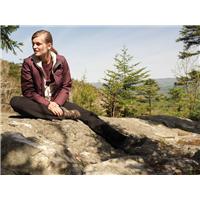
Millions put feet at risk – are your shoes made for walking?
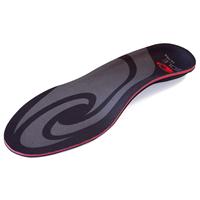
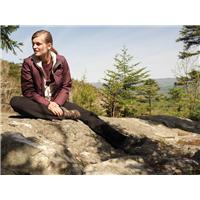
London: Walking is Britains most popular activity with approximately 38 million people walking for pleasure at least once a month. But are you sure your shoes are up to the job?
As the Summer months approach us, Achilles Tendonitis (inflammation of the Achilles tendon), Tibial Stress Syndrome (Shin Splints) and Plantar Fasciitis (Inflammation of the bottom of the foot), just some of the injuries sustained whilst walking, will be on the increase.
There is no doubt that walking is good for you, it has many health benefits, increases your levels of fitness and as a result the number of people walking for a hobby is on the increase and so is the number of injured feet!
Luke Barlow, founder of Fitness Footwear the number one online sports and activity shoe retailer said: Walking may appear to be the lightest of outdoor hobbies however, with 23.6 Million people regularly talking walks of 3.2 km or more it is important that the correct footwear is worn. With the summer approaching, many individuals and families will be dusting off their (potentially foot unfriendly) walking boots in anticipation of hitting the hills.
Fitness Footwear has partnered with the British Chiropody and Podiatry Association to provide walkers with the information needed to avoid unnecessary injury to feet in a variety of walking conditions.
With different days come different walking conditions, each requiring a diverse footwear type and alternative sock/shoe/insole combinations. Utilising the knowledge of the British Chiropody and Podiatry Association and its own shoe knowledge, Fitness Footwear has created the ideal combination to avoid unnecessary and painful injuries for five common walking conditions.
Hot Conditions The British Chiropody and Podiatry Association suggests: As with all types of clothing, it is important whilst walking in hot conditions to be well ventilated. A good quality sandal or sandal-type shoe is recommended to avoid any potential damage.
Fitness Footwear recommends the Merrell Moab Ventilator shoes with a Smartwool Hiking Crew sock for its added protection. Finally it is recommended that a Sole Ultra SofTec Insole is used as inevitably the hot conditions will cause a hard ground – this particular insole is renowned for the support it provides to the knees and lower back.
Cold Conditions – The British Chiropody and Podiatry Association suggests: In cold conditions it is suggested that a thick woollen sock, or a couple of pairs of thinner socks, is best to provide greater comfort, warmth and protection from associated injuries.
Fitness Footwear recommends the Merrell Chameleon Thermo 6 Waterproof Synthetic Shoe for its Thinsulate insulating lining ensuring that feet are kept warm, matched with a Brasher 3 Season sock a good all round protector and insulator. For the sole it is recommended that a Superfeet WinterGreen Performance insole is used as it provides insulation but also aligns the feet.
Wet Conditions – The British Chiropody and Podiatry Association suggests: Unless walking in streams or fords for extended periods, avoid the obvious choice of Wellington boots on long walks. Not renowned for their comfort, Wellingtons are prone to chaffing and the rubber soles tend to draw the feet. A good quality insole is necessary as that ventilates well.
For walking in wet conditions Fitness First recommends the Salomon Mega Trek 6 Light GTX/WP boot as it is waterproof and breathable, with SealSkinz long light socks for their waterproof, windproof yet breathable capabilities. For the insole, a Superfeet Green performance insole is recommended as it is one of the best off the shelf orthotics on the market, and helps to align the body whilst walking.
Mountain terrain – The British Chiropody and Podiatry Association suggests: Essential for mountain walking is a thick trainer-type shoe or boot with plenty of grip. Cushioned insoles are recommended to avoid potential lesions or damage on rocks and uneven surfaces.
Fitness Footwear recommends the Merrell Chameleon Thermo 6 Waterproof Synthetic Shoe for the protection offered against potentially sharp rocks, matched with the Smartwool Hiking Crew sock for added protection. A Superfeet WinterGreen Performance insole will provide insulation and will also keeps the feet in alignment to keep a better footing.
Road Walking – The British Chiropody and Podiatry Association suggests: A leather sole with a shock absorbing rubber heel will help avoid injuries gained from continually walking on hard terrain. All rubber soles need to be avoided as they will draw the feet.
Fitness Footwear recommends that the light weight Merrell Moab Ventilator shoe is used with a Smartwool Hiking Crew sock for protection and the Sole Ultra SofTec Insole.
The British Chiropody and Podiatry Association suggests: Even with all these recommendations every walker should carry some Sorbothane Sorboskin Blister Plasters for any unforeseen injuries.
Mike Batt, Honourary President of The British Chiropody and Podiatry Association said We frequently see and hear stories of individuals who have not prepared properly and worn inappropriate footwear. Consequently, walking can cause some horrendous blisters, chaffing and other related injuries that could be easily avoided.
Luke Barlow added: Through our partnership with the British Chiropody and Podiatry Society we aim to raise awareness of the importance of looking after your feet. We have an extensive range of walking shoes for all weather conditions and are more than happy to provide advice to ensure the perfect fit.
Fitness Footwear (www.fitnessfootwear.com) offers a range of sport and leisure shoes to cater for every interest. From running to climbing, from parkour to fashion, Fitness Footwear has something for everyone, stocking top quality brands including Brasher, Ecco, Hi-Tec, Merrell, DC, Mizuno and Quicksilver.
The secure site enables you to browse by activity or brand and all orders despatched within the UK come with free delivery as standard.
For More information please visit www.fitnessfootwear.com or call 0870 080 1736 (UK number).
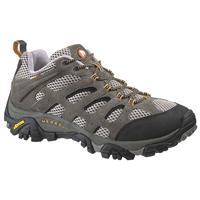
Moderate daily exercise reduces death in men
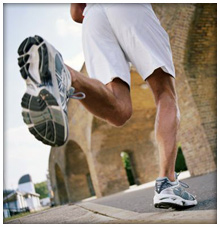
Washington: Brisk walking for just 30 minutes daily is enough to half the risk of premature death of men from all causes, according to new research.
The US-government-sponsored analysis — the largest such study ever — found that a regimen of brisk walking 30 minutes a day at least four to six days a week was enough to halve the risk of premature death from all causes.
“As you increase your ability to exercise — increase your fitness — you are decreasing in a step-wise fashion the risk of death,” said study author Peter Kokkinos, director of the exercise testing and research lab in the cardiology department of the Veterans Affairs Medical Center in Washington, D.C.
That conclusion applies more or less equally to white and black men, regardless of their prior history of cardiovascular disease. According to Kokkinos, that may be because the veterans in the study all received the same level of care, regardless of income.
This evened the playing field, he said, giving him “great confidence” in the results, which will be published in the Feb. 5 issue ofCirculationand were released online Jan. 22.
In the study, Kokkinos and his team reviewed information gathered by the VA from 15,660 black and white male patients treated either in Palo Alto, Calif., or in Washington, D.C.
The men ranged in age from 47 to 71 and had been referred to a VA medical facility for a clinically prescribed treadmill exercise test sometime between 1983 and 2006. All participants were asked to run until fatigued, at which point the researchers recorded the total amount of energy expended and oxygen consumed.
By tracking fatalities through June 2007, Kokkinos and his colleagues found that for both black and white men it was their fitness level, rather than their age, blood pressure or body-mass index, that was most strongly linked to their future risk for death.
The study proved that it takes relatively little exercise to achieve health benefits.
How to walk your way to fitness in 2008
_&_Joanna_Hall_(R)_Small.jpg)
London: One of the most popular new year resolutions made each year is to get fit, but how many see it through? Not many, according to research* released in December 2007 which stated that 71% of people failed in their attempt,probably preferring the comfort of their sofa.
Joanna Hall, (pictured above right) one of the UKs leading fitness and walking experts and co-founder of Walkactive, has five top tips that get results. The good bit is that there isnt a gym in sight.
Joanna Hall says: Walking is simple, easy, and just about anyone can do it. Some people are sceptical about many of its benefits, but there is no disputing the research. Walking at the right pace and with the right technique can reduce the risk of many diseases and painful conditions (see Note 3 below). Whether someone is completely new to fitness, wants to firm up, lose excess Christmas pounds, or just get fitter and healthier, walking is perfect.
Walking has few side effects and can be done by almost anyone, anywhere.
Try Walkactives top five tips and start stepping into shape:
1. Invest in a good pedometer studies show that individuals who wear a pedometer are significantly more physically active than those who dont.
2. Establish your average daily baseline use your pedometer to record the number of steps you take per day for four days and work out your average steps per day (ideally you should include a weekend and work day to get a truer reflection of your weekly activity). During the first week you must match your baseline number of steps every day, then for the next 4 weeks, depending on how fit you are, add 500 or 1,000 steps to your baseline and match that new baseline each day. This approach gets you fitter gradually and helps you feel in control.
3. Establish your Optimum Walking Pace – this is the pace at which you feel slightly out of breath, feel you need to take off a layer of clothing and is most probably the pace you may walk at if you are late for a meeting but dont want to break into a run!
4. Fine Footwear – your footwear is the most important asset. Specialist shoes and boots are available for leisure, fitness, hill and mountain pursuits. Look for good support in your ankle and forefoot comfort and support do matter.
5. Spread your steps – split your days into zones and aim for a certain number of steps in each three or four time zones. This stops you having to achieve a huge step target all in one go at the end of the day, plus challenges you to use walking as a form of travel and reduces your carbon footprint.
Alissa Twisk, (pictured above left) leading charity walking expert and cofounder of Walkactive, says: Whether its walking to get fit, train for a charity walk, firm up, or lose weight, we have trained thousands of people to get the results they deserve. Our courses began in Central London locations but as of January 2008 we have grown to include venues spread around the South East. We also launched our online club in January so we can motivate and encourage in-between training sessions through weekly e-mail support, monthly online chats with Joanna and myself, and exclusive discounts on our courses and events. Anyone wishing to benefit from the power of walking can join our next courses which start from Sunday 20th January.
Further details of course dates, venues and how to book a place can be
found at www.walkactive.co.uk
*Professor Wiseman, University of Hertfordshire
1. WalkActive courses:
WalkFit is for those who want to get fit, firm and healthy and includes one one-hour session per week for six weeks with courses held on Sundays or weekday mornings.
Walk Firm makes lunchtimes count with a 45 minute cardio walking blast class. A dynamic class that will leaves you feeling toned, refreshed and full of energy for the afternoon. Held in Green Park on Thursdays.
Baby Buggy and Me helps mums regain their body through one 50 minute session a week for six weeks.
Walk Off Weight, is a 28 day course that gets weight and inches off through twice-weekly one-hour sessions and weekly 30 minute motivational talks.
2. WalkActive is run by two fitness and walking experts Joanna Hall and Alissa Twisk.
Joanna Hall is one of the UKs leading fitness experts and is passionate about walking. A regular on TV and radio, she is creator and presenter of four exercise DVDs and author of nine books, including three top ten best sellers. Joanna is committed to delivering programmes that work.
Alissa Twisk has for the past eight years trained and encouraged hundreds of people as they prepare to complete charity walking events. Her knowledge and hands on experience is widely sought.
3. The health benefits of walking.
Walking can help prevent heart disease, stroke, colon cancer, constipation, osteoporosis, impotence, high blood pressure and depression
Walking can help improve metabolism, breathing, circulation, concentration, memory, sleep, sense of well being, overall mood and stress levels
Walking can take inches off hips, thighs, bottoms and waistlines, manage weight, and strengthen muscles, bones and joints
New report looks at ways to promote walking
People can be encouraged to walk for up to 30-60 minutes more per week if they are given the right kind of help, finds a study published on www.bmj.com today. This could make a valuable contribution to improving public health.
Physical activity reduces the risk of heart disease, diabetes and cancer of the colon, write David Ogilvie and colleagues for the Scottish Physical Activity Research Collaboration (SPARColl). Walking is a free and convenient way to be active, and most people can continue walking into old age. Promoting walking could therefore help tackle the health problems linked to today’s inactive lifestyles.
The authors reviewed 48 studies of different approaches to promoting walking. The most successful were tailored to peoples needs and targeted at sedentary people or at those most motivated to change. These increased walking in the target groups by up to 30-60 minutes a week on average, at least in the short term. Given how little exercise most people take, this amounts to a substantial increase, say the authors.
The authors found that walking could be encouraged in a variety of ways. Examples included giving face to face advice or telephone support, using pedometers, or promoting walking as an environmentally friendly mode of transport. Different people may respond to different approaches, say the authors. One size may not fit all, and a range of options should be offered, they conclude.
Click here to view the full article: www.presspssprings.co.uk

